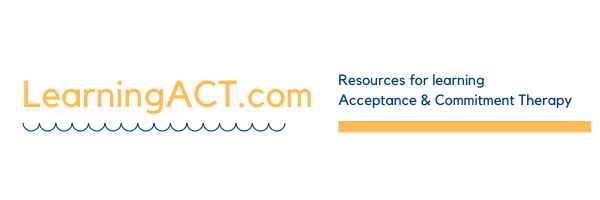Self as context is the concept that we are not the content of our experience — we are not our thoughts, our feelings, our experienced sensations, the things we see, or the images that pass through our heads. Through exercises and metaphors, we can contact a transcendant sense of self that is more like the context, perspective, or arena where life happens. In ACT, this self as context is contrasted with self as content, or the stories and thoughts that we have about ourselves, our identity, and our history.
In fusion with self as content, we lose the distinction between ourselves as the experiencer of life and the thoughts and stories that we tell about our lives. We would never get ourselves confused with the chair we sitting on or something that we are looking at, but when it comes to noticing that we are distinct from our own thoughts, it becomes much harder to take the observer position and to see the distance between our selves and our thoughts.
In ACT, people are trained to be more aware of this sense of self through a variety of exercises, several of which are relatively lengthy. However, these exercises can be quite brief. This is discussed to some extent in the book Learning ACT.
Today I stumbled upon an idea for an exericse that could create an experience of self as context. It came from an exercise by Eckhardt Tolle (not really a big fan of him, but I liked this exercise) that I modified to be more consistet with an ACT perspective and more focused on self as context specifically.
Here’s the exercise (as I modified from the original):
Stop and silently listen to what you are saying to yourself, to the voice in your head. Once you are listening closely, ask yourself the following two questions:
- Am I the thoughts that are going through my head?
- Or, am I the one who is aware of these thoughts that are going through my head?
In this exercise, our job with these questions is not to answer them, but rather to sit with the question and wait, aware, and see what shows up. This is not about creating more thoughts, but creating a new awareness where we are aware of the distinction between ourselves and our thoughts. The point of the exercise is not to create belief in a new sense of self, but to develop the ability to step back from thoughts, to observe them with less entanglement.
If I were doing this in session with a client, I would probably debrief the exercise after I did it with them. Or I might give it as something to practice several times over the week between sessions and have them journal a bit about reactions to the exercise after they did it. Or I might record the exercise on my mobile phone using Drop.io and send a copy of the MP3 to a client to use in practice.
Perhaps you might try out the exercise yourself, right now and let me know what you think of it.
BTW, if you’re wanting to learn more about self as context as a therapist, this is probably the best book out there: A Contextual Behavioral Guide to the Self: Theory and Practice
We also expanded the content on how to use self-as-context extensively in the chapter on the topic in the Learning ACT (2nd Edition) guide. I think it’s maybe the most modern chapter out there on the topic.
